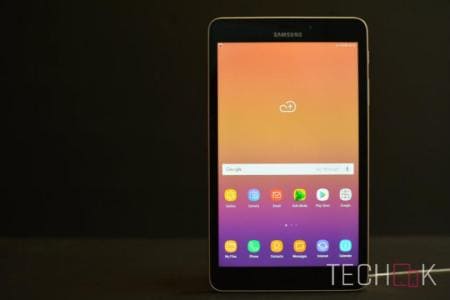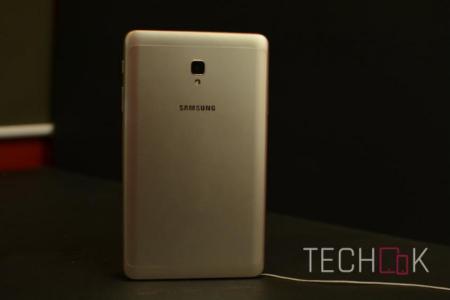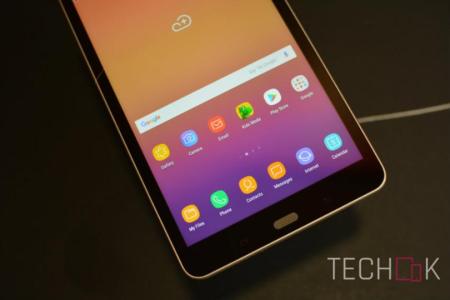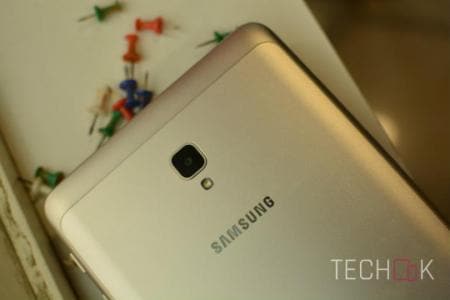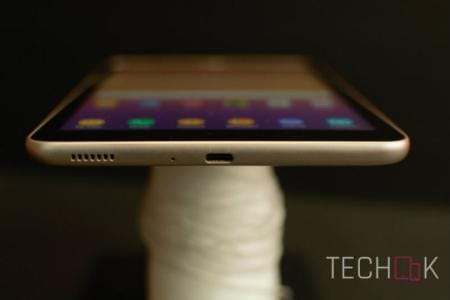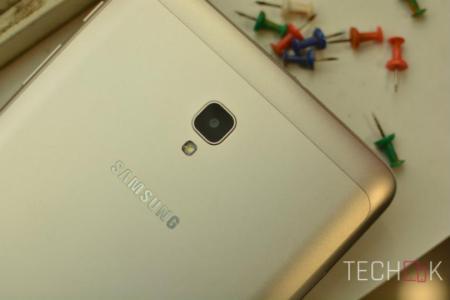Samsung Galaxy Tab A (2017) Review
Is the Samsung Galaxy Tab A (2017) really an entertainment powerhouse? Let's find out

Samsung Galaxy Tab A (2017) Introduction
Samsung back in October launched the successor to its Galaxy Tab A (2016), which got aptly named the Samsung Galaxy Tab A (2017). The company is calling the device an entertainment powerhouse, which is a claim I was happy to put to a test. It is a tablet designed to cater to the mid-range market. It is priced at Rs 17,990 in India and is currently available in Gold and Black colour variants across the country.
As for specifications, the Samsung Galaxy Tab A (2017) sports an 8-inch display with a resolution of 1280×800 pixels. It is powered by the Qualcomm Snapdragon 425 SoC along with Adreno 308 GPU. It features 2GB of RAM along with 16GB of internal storage, expandable to 256GB via microSD card. All of this is backed by a 5,000mAh battery and it runs Google’s Android 7.1.1 Nougat operating system with Samsung’s Experience UI 8.5 on top. Interestingly, this is the first mid-range tablet from the company to feature its digital assistant, Bixby.
As for the optics, The Galaxy Tab A (2017) houses an 8-megapixel primary camera with LED flash. On the front, we see a 5-megapixel camera for selfies and video calls.
Samsung Galaxy Tab A (2017) Design and Build Review
The Samsung Galaxy Tab A (2017) sports an 8-inch display packed in a plastic body with a metallic finish.It measures 212.1mm x 124.1mm x 8.9mm and weighs 364 grams. Despite the plastic body, the Samsung Galaxy Tab A (2017) managed to look very appealing. Interestingly, the tablet managed to pass our pocket test, in which we test if the tablet is able to fit in our pocket comfortably or not. Also due to it being light I found myself using it much more than I had planned to.

On the front, we get to see the 8-inch IPS LCD display, the earpiece, front camera, two capacitive touch buttons, and a home button (which doesn’t double up as a fingerprint sensor). On the right edge, we get a power button along with a volume rocker. On the left edge, you get a slot for one microSD card for expansion along with one SIM card slot. On the top edge, it has a 3.5mm audio jack and a secondary microphone. On the bottom edge, we get a USB Type-C port for charging and data transfer along with a speaker grille and the primary microphone. The back panel of the tab is mostly plain except for the camera module and the branding.

Overall, the look and the feel of the Samsung Galaxy Tab A (2017) is really nice. Despite the build being good, it is not a metal body which makes us wonder if the tablet will be able to handle a bit of beating or not.
Samsung Galaxy Tab A (2017) Display Review
The Samsung Galaxy Tab A (2017) sports an 8-inch display with a resolution of 1280 x 800 pixels. This lower resolution helps in extending the battery life of the tablet. The display doesn’t feature the newest 16:9 aspect ratio; instead Samsung has opted to go with an aspect ratio of 16:10. This is good for people looking to watch movies and also read ebooks on the tablet.

The display is very bright and vibrant, however, it lacks sharpness (this could be a personal bias of the reviewer due to him having an iPad Air 2 as his daily tablet). The tablet has great viewing angles though and can be looked at from various angles without distortion, which is a good thing. Additionally, Samsung also decided to add the blue-light filter feature in the tablet which will help users protect their eyes from the harmful blue rays that electronic displays emit.
I understand that Samsung went for a lower resolution display to extend the battery life of the tablet, however, I would have appreciated a full HD display on this tablet a lot more.
Samsung Galaxy Tab A (2017) Performance and UI Review
The Samsung Galaxy Tab A (2017) is powered by a 1.4GHz quad-core Qualcomm Snapdragon 425 processor. It runs Google’s Android 7.1 Nougat operating system which is a decent operating system for current times. I hope it gets an Android 8.0 Oreo update but I cannot confirm at this time whether it will. It has 2GB of RAM paired along with 16GB of internal storage expandable up to 256GB via microSD card.
As for our usual performance tests, the Tab A (2017) scored 35488 in AnTuTu benchmark. In Geekbench it was able to score 657 in the single-core test whereas it scored 1799 in the multi-core test. In PCMark’s Work 2.0 test, it scored 3362. Might you be thinking these numbers are very low? Which is what I initially thought too, but you have to keep in mind that this is a mid-range device with mid-range specifications. You can’t go comparing it to the current flagships.

In our day to day testing, we didn’t find the tab to be slow or display any kind of lag which is a good thing. It was able to handle my daily entertainment needs, including gaming, YouTube, playing music, and much more. The tab did lower the resolution while playing Asphalt 8 and did show few frame drops and stutters here and there. However, when playing not so heavy games, I found the device to be handle itself well.
There’s nothing major to write about the cameras other than them being functional and let you click the odd photos here and there. Don’t even think of making this your primary shooter. The performance isn’t even comparable J series phones from Samsung. But then this is a tablet and camera isn’t one of its key selling points.
Coming to the software, Samsung’s new Experience UI might just be my second favourite flavour of Android after the stock configuration. Samsung seems to have left its TouchWiz days behind as there was a very minimal amount of bloatware present on the device including Google, Microsoft and Samsung’s apps. The included Microsoft Office Suite apps will also help you get a bit of work done if need be.

Multi-tasking was a breeze on this tablet. We had around 20 apps open and were constantly shifting between them with no lag. This is a very good thing. Additionally, the tab also comes with Bixby, which to be honest, I didn’t use much due to it just being a one trick pony.
Overall, I found the performance and the UI of the Tab A (2017) very good. The only gripe with it being it can’t handle heavy gaming.
Samsung Galaxy Tab A (2017) Verdict
The Samsung Galaxy Tab A comes with a sturdy build, good design, average display and performance. I was able to overcome everything bad in the tablet and enjoy my time with it. But would I recommend it to you wholeheartedly? May be not at that price. It comes with a price tag of Rs 17,990, which in my opinion is a bit more than what the tablet should actually sell for. Anything between 12K to 14K would have been a good deal.
Samsung Galaxy Tab A (2017) Photo Gallery
